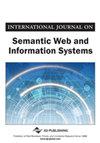A Novel Semantic Segmentation Approach Using Improved SegNet and DSC in Remote Sensing Images
IF 5.6
4区 计算机科学
Q2 COMPUTER SCIENCE, ARTIFICIAL INTELLIGENCE
International Journal on Semantic Web and Information Systems
Pub Date : 2023-10-25
DOI:10.4018/ijswis.332769
引用次数: 0
Abstract
An improved SegNet semantic segmentation model is proposed to address the issue of traditional classification algorithms and shallow learning algorithms not being suitable for extracting information from high-resolution remote sensing images. During the research process, space remote sensing images obtained from the GF-1 satellite were used as the data source. In order to improve the operational efficiency of the encoding network, the pooling layer in the encoding network is removed and the ordinary convolutional layer is replaced with a depth-wise separable convolution. By decoding the last layer of the network to obtain the reshaped output results, and then calculating the probability of each classification using a Softmax classifier, the classification of pixels can be achieved. The output result of the classifier is the final result of the remote sensing image semantic segmentation model. The results showed that the proposed algorithm had the highest Kappa coefficient of 0.9531, indicating good classification performance.基于改进SegNet和DSC的遥感图像语义分割新方法
针对传统分类算法和浅学习算法不适合从高分辨率遥感图像中提取信息的问题,提出了一种改进的SegNet语义分割模型。在研究过程中,使用GF-1卫星获得的空间遥感图像作为数据源。为了提高编码网络的运行效率,将编码网络中的池化层去掉,将普通卷积层替换为深度可分卷积。通过对网络的最后一层进行解码,得到重构后的输出结果,然后使用Softmax分类器计算每次分类的概率,就可以实现像素的分类。分类器的输出结果就是遥感图像语义分割模型的最终结果。结果表明,该算法Kappa系数最高,为0.9531,分类性能良好。
本文章由计算机程序翻译,如有差异,请以英文原文为准。
求助全文
约1分钟内获得全文
求助全文
来源期刊
CiteScore
6.20
自引率
12.50%
发文量
51
审稿时长
20 months
期刊介绍:
The International Journal on Semantic Web and Information Systems (IJSWIS) promotes a knowledge transfer channel where academics, practitioners, and researchers can discuss, analyze, criticize, synthesize, communicate, elaborate, and simplify the more-than-promising technology of the semantic Web in the context of information systems. The journal aims to establish value-adding knowledge transfer and personal development channels in three distinctive areas: academia, industry, and government.

 求助内容:
求助内容: 应助结果提醒方式:
应助结果提醒方式:


